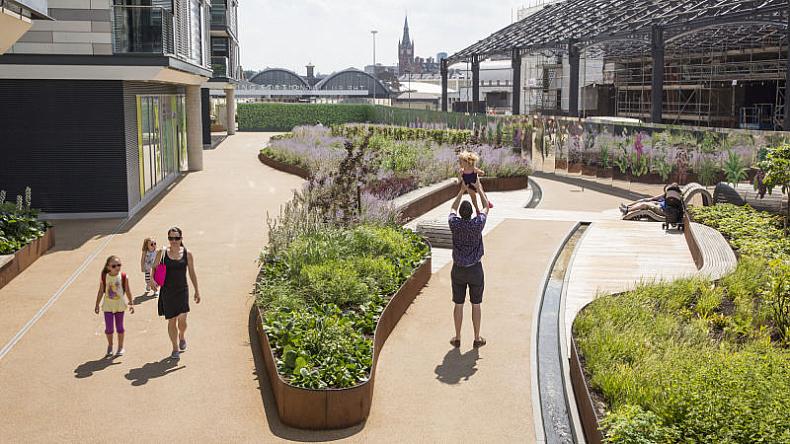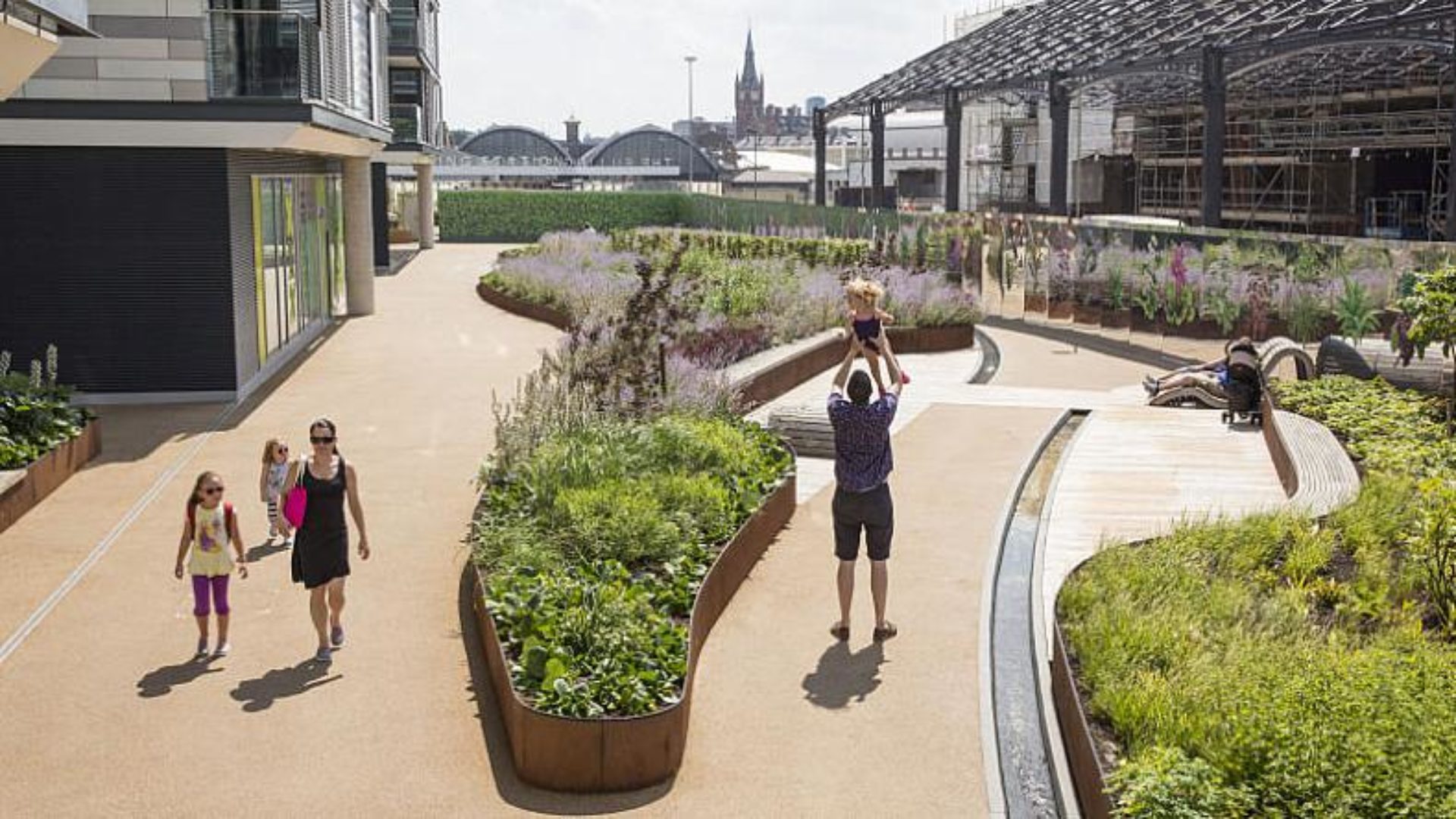There have been a number of high profile projects in London recently where developers have employed garden designers. This is nothing unusual, you might think. But in actual fact it is a departure from traditional practice, and quite an interesting one.
Firstly, the projects are not ‘gardens’ as such (see my post on ‘When is a Garden Designer a Landscape Designer’ for more details on this and for definitions of what a garden actually is). Most of them are in the semi-public or public realm – parks, squares, pedestrian spaces between buildings, etc.
Secondly, this is traditional territory for landscape architects. In the past, the likes of Gillespies, Capita Lovejoy, Townsend and the like would generally have undertaken these sorts of projects. However, if the client wanted someone high profile, they would have perhaps engaged a ‘rock-star’ landscape architect such as Martha Schwartz, Kathryn Gustafson or perhaps even Eelco Hooftman of Gross Max – all from outside the UK, you will note (although many practice here).
The large (non ‘rock-star’) practices are still very much engaged in the public realm – more so than ever. One doesn’t hear much about them however. And perhaps therein lies the key to what is going on here. To use developer-speak, they are not ‘sexy’. Dan Pearson, on the other hand, is sexy (forgive me please Dan!); as are Andy Sturgeon, Christopher Bradley-Hole and Tom Stuart-Smith. All are gold medal winners at the Chelsea Flower Show, which receives more TV coverage than any annual event except Wimbledon and all are therefore household names, to a greater or lesser extent.

Handyside Gardens, Kings Cross; designed by Dan Pearson. Photo courtesy of www.kingscross.co.uk
So is it that developers simply want some of this ‘brand’, some of the glamour of Chelsea to be associated with their developments? That probably accounts for a lot of it. Branded ‘products’ are appearing more and more with developments. Interiors by so-and-so, architecture by practice X (although often only the concept) and so on. But if that is so, then perhaps a more interesting question is why are there no ‘sexy brands’ in landscape architecture. Why is it “Gardens by Dan Pearson” and not “Landscape by Townsend”. I would argue that it is a systemic problem with landscape architecture in the UK. Ever since landscape architecture emerged as a self-made idea, it has hitched itself to architecture. In the UK this meant mimicking the RIBA – copying its structure, professional values, procurement strategies – although inevitably always a step or two behind. However, as a result the public has failed to distinguish landscape architecture as a separate profession. It is almost as if the landscape profession puts on its dustiest jacket to go to the professional party. Even the name is confusing. the two individual words are perfectly understandable to people, but together they don’t really make a sensible meaning – is it really the architecture of landscape? Or perhaps it is just the landscapey bits of architecture (there we go again…). Now garden design, on the other hand, what could be clearer? To make it worse (or perhaps illustrating my point) many landscape architects really look down their noses at garden designers.
So what is it that distinguishes the landscape professions from all the others? The answer is that we work with plants. Paving, levels, external space, all of these things can be and often are done by other professions; though often less successfully in my view. Those Latin names though – that always gets them! Planting design is a specialism in itself, and one that most landscape architects don’t do often enough to excel at. Garden designers on the other hand often come into the profession through the planting door. Sometimes I think that this is exactly why landscape architects look down on them. To be fair, many garden designers are not very good at all the other stuff.
Of course the ultimate irony is that most of the garden designers who are taking on public realm work employ landscape architects in their practices to help them implement the projects – because they have a better technical knowledge. Sad then, that landscape architects are basically seen as good technicians, but not as creatives.
One question that remains hanging is that of aftercare. Perhaps you have already read my other articles about maintenance of public landscapes (‘The whole life cost of a Citroën‘ and ‘The great divide … north/south? or capital/maintenance?’), but if not, then my point here is that there is no point in designing something without making sure that the resources and skills are there to care for it. Dan Pearson is famously careful about this, as are Argent Estates, his ultimate client at Handyside. But it is a point to consider: garden designs need gardeners to look after them. So is it the case that if developers employ landscape architects, they get something boring, but if they employ garden designers, they get something exciting? Maybe, but it’s a moot point. However, the truth is that in most cases, what garden designers deliver is still garden design, which may be unsuitable for the public realm resources. It will be interesting to see how it pans out in years to come.

